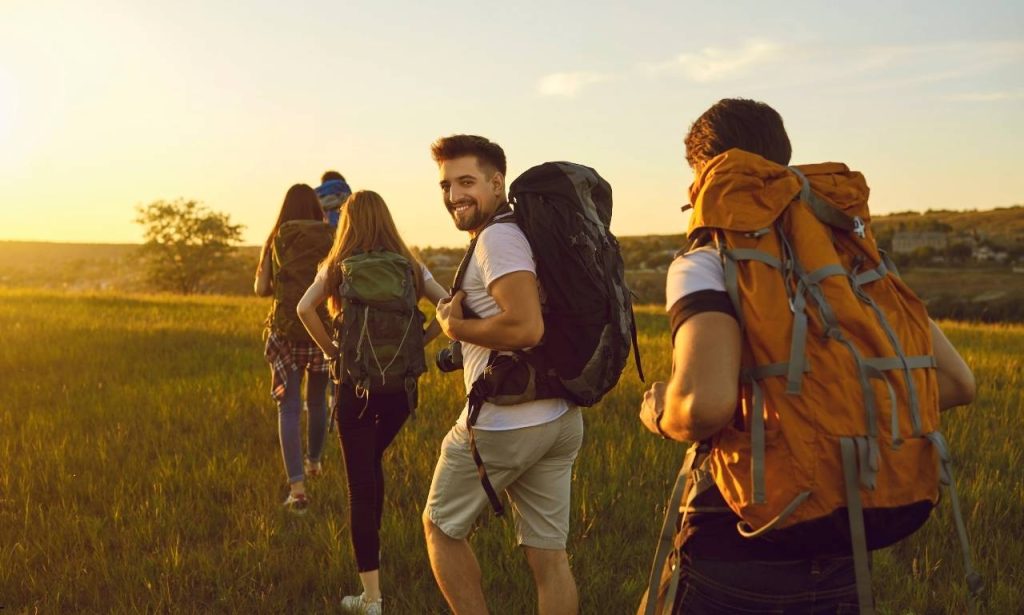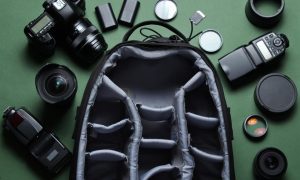Hiking in hot weather is serious business. The sun doesn’t take breaks, and neither should your gear. Without proper clothing, an otherwise energizing outdoor adventure can become a struggle against sweat, sunburn, and fatigue. Every step becomes a chore when your shirt sticks to your skin or your socks cause blisters. But the good news is that hot weather hiking gear has never been better. In 2025, brands are designing smarter, lighter, and more protective apparel that lets you enjoy your hike, even in sweltering heat.
Whether you’re heading into dry desert canyons, sunny alpine trails, or tropical rainforests, choosing the right gear is your best defense against the elements. The right clothes not only enhance your comfort—they help prevent heat-related illnesses and long-term sun damage. This guide will help you choose the best shirts, pants, hats, shoes, and accessories, along with tips for staying healthy on the trail during the hottest months of the year.
Hiking Shirts for Hot Weather

Your hiking shirt is the first barrier between your body and the sun. In hot conditions, the ideal shirt should keep you cool, dry, and protected from UV rays. In 2025, many brands are producing shirts with integrated UPF 50+ ratings. These sun-protective fabrics act like wearable sunscreen, reducing your reliance on lotions while keeping your skin safe during long days on exposed trails.
Materials matter more than ever. Synthetic blends such as polyester and nylon are dominating the market because of their lightweight, moisture-wicking, and fast-drying properties. These fabrics pull sweat away from your skin, helping it evaporate quickly to cool you down. Merino wool, once thought to be only for cold weather, is increasingly popular in summer gear. It resists odor, breathes well, and keeps you comfortable even when damp, which makes it a smart choice for multi-day hikes without laundry access.
Design features are becoming more functional as well. Mesh ventilation zones under the arms or along the back increase airflow. Roll-up sleeves give you control over sun exposure. Collars offer extra neck protection, especially when combined with a neck gaiter. Some shirts are also treated with antimicrobial finishes, which help manage odor and bacteria buildup—critical when you’re sweating through miles on rugged terrain.
The key mistake to avoid is cotton. While soft and comfortable at first, cotton traps moisture and stays wet. That leads to chafing, skin irritation, and even a rapid drop in body temperature if you stop moving in a breeze. Stick with technical fabrics that are engineered for performance in heat.
Best Hiking Pants for Hot Weather
It’s tempting to reach for shorts when temperatures rise, but lightweight hiking pants are often the better choice. Long pants protect your legs from sunburn, insects, abrasive plants, and sharp rocks. In hot-weather conditions, modern hiking pants have evolved to offer full protection without sacrificing breathability or comfort.
In 2025, the best pants for summer hiking are made from ultra-light synthetic materials that stretch, wick sweat, and dry fast. Stretch-woven nylon with a durable water repellent (DWR) finish is a common feature in leading products. These fabrics shed light moisture while staying breathable and cool against the skin.
Convertible pants remain a favorite for many hikers. These pants let you zip off the lower legs and convert into shorts, providing versatility for changing conditions. Some hikers find the zippers uncomfortable or bulky, so alternative designs offer roll-up cuffs with button loops or snap tabs. Laser-perforated ventilation behind the knees or on the inner thighs is another innovation, allowing heat to escape naturally.
Good pockets are essential too. Look for pants with zippered thigh compartments and lightweight mesh-lined hip pockets. These details allow you to carry trail essentials like maps, energy bars, or your phone without weighing you down or overheating your core.
Avoid thick trekking pants built for cold-weather mountaineering. They often have insulated layers or heavy materials that trap heat. You want pants that feel barely there, yet tough enough to handle the occasional scrape or insect bite. Comfort, flexibility, and protection are the pillars of a great summer hiking pant.
Hiking Hats
The sun’s rays are strongest on your head, face, and neck, which makes a hat one of the most critical pieces of gear for summer hiking. In 2025, hat technology is keeping up with the rest of the outdoor apparel industry. Brands are designing headwear that’s not only protective but also lightweight, breathable, and trail-tough.
A wide-brim hat offers the best all-around protection. It shades your face, ears, and the back of your neck from direct sunlight. Many of the top models now include mesh crowns for ventilation, moisture-wicking sweatbands, and adjustable chin cords so the hat stays secure during windy conditions. Some hats even feature removable flaps or convertible neck capes, which shield your skin from UV exposure without overheating.
Although neck cape hats aren’t exactly fashion-forward, their utility is unmatched in desert and tropical environments. For those who prefer a minimalist look, a lightweight running cap with UV protection is still effective. Just remember to apply sunscreen to your neck and ears, since these areas won’t be covered.
An old but effective trick is to soak your hat or a neck bandana in cold water. The evaporation effect will cool your head and neck significantly. When choosing colors, avoid black or navy. Light colors like beige, tan, and pale gray reflect sunlight instead of absorbing it, helping you stay cooler throughout the day.
Hiking Shoes and Socks
When it comes to hot weather hiking, your feet take the most abuse. Every mile puts stress on them, and heat can turn that stress into pain quickly if you’re wearing the wrong shoes. The best hiking footwear in 2025 balances breathability, support, and traction to keep your steps confident and blister-free.
Ventilated hiking shoes are a must for dry and hot conditions. Mesh uppers are now more advanced, allowing air to circulate while blocking out fine dust and debris. Companies like HOKA, Merrell, Altra, and Salomon lead the way in designing shoes specifically built for heat. These models include reinforced toe boxes, grippy soles, and cushioned midsoles to handle everything from gravel paths to steep switchbacks.
Waterproof shoes with Gore-Tex membranes are great for wet environments, but in hot climates, they can act like an oven around your feet. For dry conditions, non-waterproof shoes are the better choice. They dry faster, breathe more easily, and reduce the risk of sweat buildup and blisters.
Socks are just as important. Merino wool blends dominate the summer hiking market thanks to their moisture-wicking, breathable, and odor-resistant qualities. These socks reduce friction and regulate temperature, even when wet. Brands like Darn Tough, Smartwool, and Farm to Feet offer socks that provide targeted cushioning and arch support, which help prevent fatigue over long distances.
Cotton socks, again, should be avoided at all costs. They hold onto moisture and increase friction, leading to painful blisters. If you’re hiking in the heat, always choose socks designed for trail performance.
Essential Accessories for Summer Hikes
While your main clothing items do the heavy lifting, a few small accessories can make a huge difference in comfort and safety. Neck gaiters made from cooling fabrics are popular in 2025. They protect your neck from sun exposure and can be soaked in water for instant cooling. When worn over the nose and mouth, they also help block dust and pollen.
Cooling towels are another simple tool that can prevent heat exhaustion. Just wet them, wring them out, and drape around your neck or shoulders. As the water evaporates, it cools your skin and helps lower your core temperature.
Sunglasses with UV400 lenses and polarized coatings are critical for eye safety. Glare can cause eye strain and headaches, especially at high elevations or around water. Wraparound styles offer better side protection and are less likely to fall off when you’re active.
Some hikers also opt for light sun gloves, especially when using trekking poles. These gloves shield your hands from UV rays without trapping heat and prevent sunburn in areas that are often forgotten.
Health Concerns for Hot-Weather Hiking
When temperatures climb, the risks of hiking increase significantly. Proper clothing helps mitigate those risks, but you also need to pay attention to how your body reacts to the heat.
Sunburn is a constant threat on exposed trails. Even with UPF clothing, it’s crucial to apply broad-spectrum SPF 30+ sunscreen on your face, ears, hands, and neck. Reapply regularly, especially if you’re sweating heavily. A compact tube of sunscreen should live in your hip belt or side pocket for easy access.
Dehydration is one of the most dangerous risks in hot weather. Many hikers don’t realize they’re dehydrated until symptoms like dizziness, cramps, or headaches appear. The rule of thumb is to drink at least half a liter of water per hour. In 2025, hydration packs with built-in reservoirs and drinking tubes are standard. They encourage frequent sipping without interrupting your pace.
Electrolyte imbalance is another concern. As you sweat, you lose essential salts and minerals. Replenishing with electrolyte tablets or sports drink mixes helps maintain hydration and prevent fatigue. Salty snacks like jerky or trail mix also support this balance.
Overhydration, although less common, is a real risk. Drinking too much plain water can dilute your blood sodium levels, causing hyponatremia. Symptoms include nausea, confusion, and bloating. To avoid this, alternate between water and electrolyte-rich beverages, and pay attention to your body’s cues.
Heat exhaustion and heatstroke are medical emergencies. If you experience nausea, rapid heartbeat, confusion, or stop sweating altogether, it’s time to rest in the shade and cool down immediately. Prevention is your best defense—start hikes early, rest often, and never ignore signs of distress.
Conclusion
Hot weather hiking in 2025 is safer, smarter, and more comfortable—if you wear the right gear. From breathable fabrics and ventilated footwear to UPF-rated shirts and wide-brim hats, every piece you wear plays a role in how well you perform and how good you feel on the trail.
Preparation isn’t just about endurance or route planning. It’s about outfitting yourself with clothing that works with the environment, not against it. Your gear should help your body regulate heat, shield you from harmful rays, and keep your energy levels high.
So, before you hit the trail this summer, check your wardrobe. Upgrade to clothing designed for performance in the heat, bring along a neck gaiter or cooling towel, and prioritize hydration and recovery. With the right setup, every step will feel lighter—and your hikes will become the rewarding, energizing escapes they’re meant to be.
FAQs
Synthetic materials like nylon and polyester are ideal because they wick moisture and dry quickly. Merino wool is also excellent for temperature regulation and odor control. Avoid cotton.
Yes, especially in areas with intense sun or thick vegetation. Lightweight hiking pants offer better sun protection, prevent scrapes, and keep bugs away.
Some are. Choose breathable, non-waterproof models with mesh uppers for dry, hot climates. Trail runners are often cooler and more comfortable in the heat.
Plan for at least half a liter per hour. Adjust upward based on temperature, intensity, and elevation gain.





